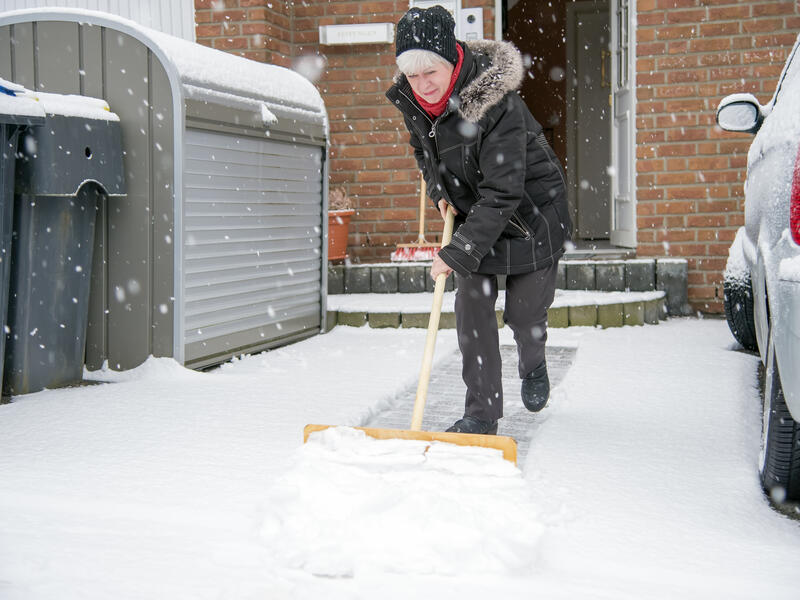Brains, not sheer brawn, are the key to avoiding injury while shoveling snow.
Warm up
The first step is planning a warm-up before heading outside. Muscles that are cold and tight are more injury-prone than those that are warmed up and flexible. It’s good to invest 10 minutes stretching, particularly the muscles in the low back and hamstrings.
Learn more: Orthopedics and sports medicine at Sanford Health
Use the right equipment
Also important is choosing the proper equipment, avoiding a shovel that is too heavy or too long. More advanced shovels like those with a curved handle or adjustable-length ergonomic shovels can lessen the effort needed to shovel and minimize bending. Using a small, lightweight shovel decreases the amount of weight being moved.
Push, don’t lift
Another brains over brawn tip: Pushing the snow instead of lifting it when possible. Yet another is to avoid attempting to shovel the full depth of particularly deep snow in one scoop, instead removing a few inches off the top at a time.
Watch your posture
Proper shoveling posture calls for legs apart, knees bent, back straight and hands 12 inches apart. To avoid bending and twisting the back, lifting with the legs is best.
When snow must be moved to a new location, don’t reach or toss the snow with the shovel. Walk it over. Grip the filled shovel with one hand as close to the blade as comfortably possible and the other on the handle. The spine is strained with excess weight when holding it with the arms outstretched.
Take a break
And one more important way to use the head and the muscles: Your body will tell you when it feels overworked. When it does, listen and take a break.
Simply walking through or shoveling snow can be especially dangerous for those with cardiovascular disease, the American Heart Association says. To make snowy days safer, the AHA suggests:
- Take breaks.
- Learn the heart attack warning signs.
- Avoid alcohol before and immediately after shoveling.
- Dress warmly and be aware of hypothermia.
- Learn CPR.
Read more
- Protect yourself from winter slips, trips and falls
- Start slowly when beginning winter activities
- There is a season for heart disease, study says
…
Posted In Health Information, Healthy Living, Heart, Orthopedics
